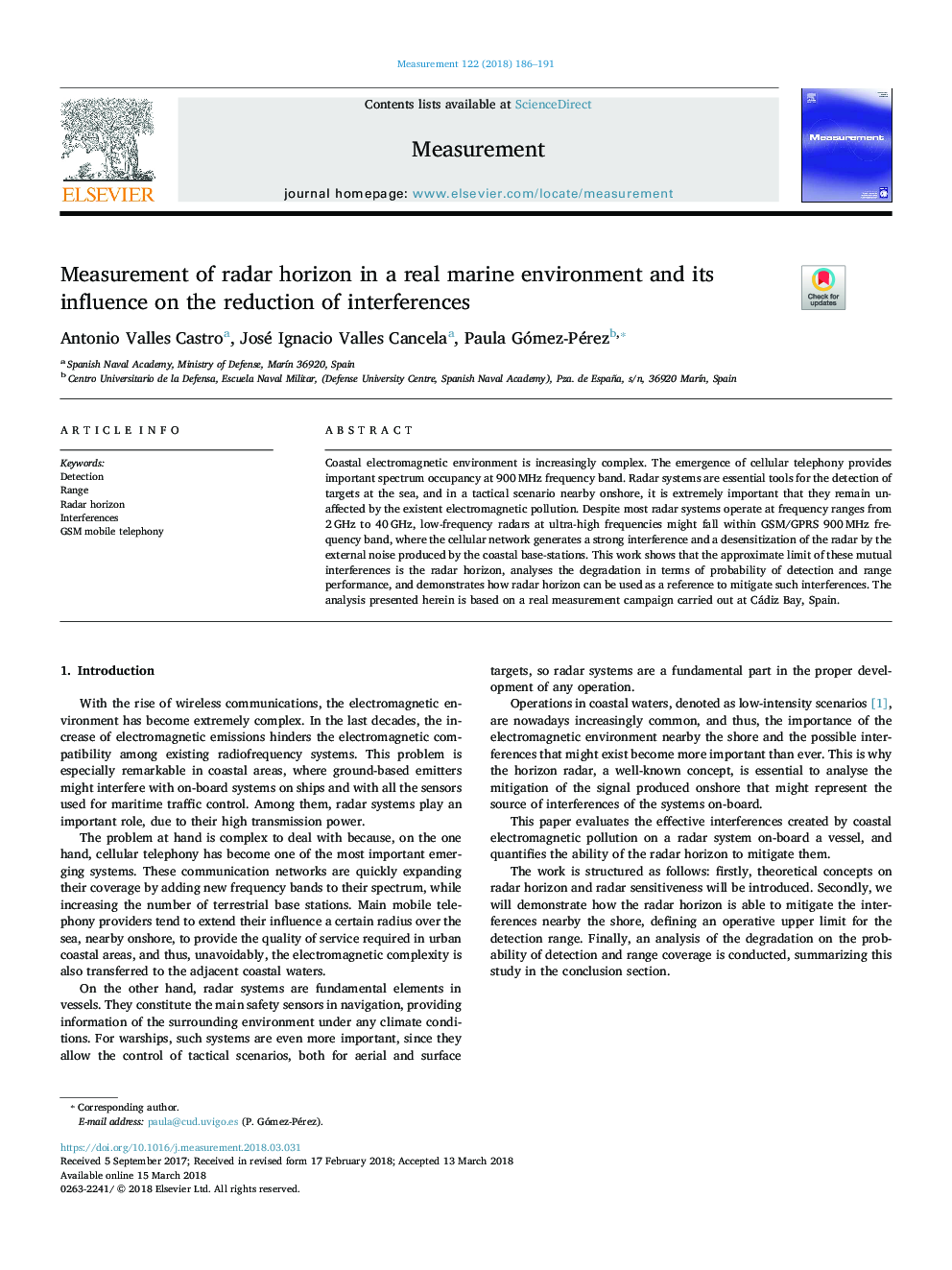| Article ID | Journal | Published Year | Pages | File Type |
|---|---|---|---|---|
| 7121287 | Measurement | 2018 | 6 Pages |
Abstract
Coastal electromagnetic environment is increasingly complex. The emergence of cellular telephony provides important spectrum occupancy at 900â¯MHz frequency band. Radar systems are essential tools for the detection of targets at the sea, and in a tactical scenario nearby onshore, it is extremely important that they remain unaffected by the existent electromagnetic pollution. Despite most radar systems operate at frequency ranges from 2â¯GHz to 40â¯GHz, low-frequency radars at ultra-high frequencies might fall within GSM/GPRS 900â¯MHz frequency band, where the cellular network generates a strong interference and a desensitization of the radar by the external noise produced by the coastal base-stations. This work shows that the approximate limit of these mutual interferences is the radar horizon, analyses the degradation in terms of probability of detection and range performance, and demonstrates how radar horizon can be used as a reference to mitigate such interferences. The analysis presented herein is based on a real measurement campaign carried out at Cádiz Bay, Spain.
Keywords
Related Topics
Physical Sciences and Engineering
Engineering
Control and Systems Engineering
Authors
Antonio Valles Castro, José Ignacio Valles Cancela, Paula Gómez-Pérez,
